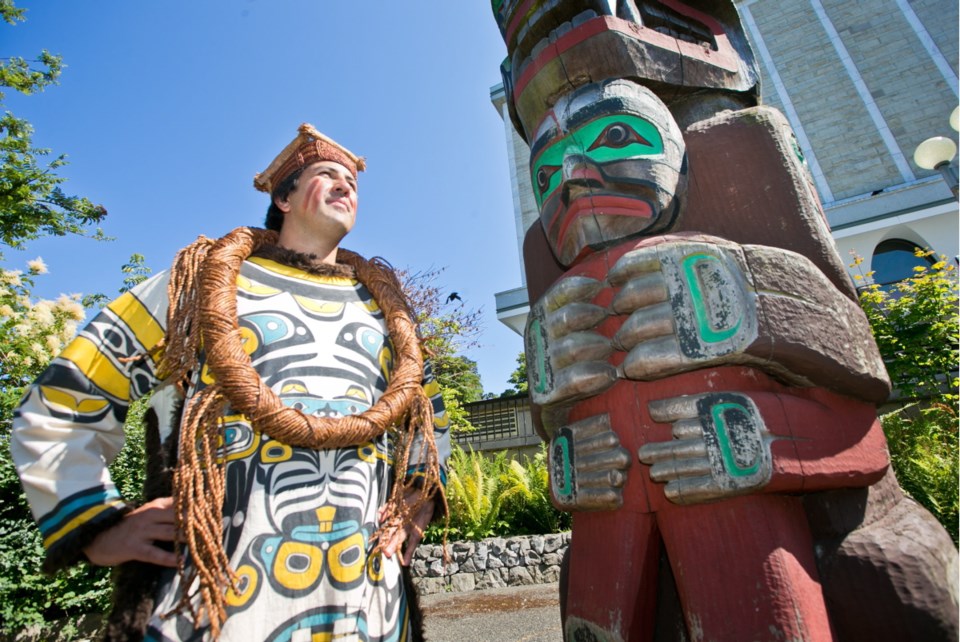Thousands of people pass the totem poles in Thunderbird Park every day, but few know the meaning of the towering cedar carvings.
That doesn’t stop them from deploying “some sort of deciphering process” to quickly misinterpret symbols that First Nations have passed down for centuries, said K’omoks First Nation artist Andy Everson.
Everson, who holds a master’s degree in anthropology, took people on a free 12-totem tour Saturday as part of the second annual Aboriginal Cultural Festival. The three-day event coincides with National Aboriginal Day today.
Imposing artworks in their own right, totems are mnemonic devices, used to stimulate memories specific to certain peoples and their right to tell their own stories, he said.
“The art of carving totem poles was almost lost because the Canadian government actually banned potlatches,” Everson said.
The gatherings coincided with totem poles raised to celebrate significant people or events and entailed days of feasting. They were banned for almost 70 years in Canada, from 1884 to 1951.
The ability of First Nations to tell their stories further declined as a result of the residential school system, Everson said. His grandfather was unable to remember details of his ancestral history after being beaten for speaking his native language.
On the tour, Everson pointed out male figures playing at bone games on one totem pole. Female figures at the top of the pole are depicted trying to distract the opposing team.
A figure outside the house of master carver Mungo Martin is missing a finger — a reflection of carver Richard Hunt’s friendship with George Taylor, a director of Aboriginal Tourism B.C. Taylor lost part of a finger at age six after daring a playmate to chop it off with an axe they found on a beach.
Keith Henry, chief executive officer of Aboriginal Tourism B.C., said the festival, which began Friday, shows off the richness and diversity of First Nations’ culture.
Aboriginals are proud of who they are and their culture is “alive and thriving,” he said.
The turnout to the cultural festival is “exceeding expectations,” Henry said. “Crowds watching the performances are three to four times the size they were last year.”
The festival provides a positive counterpoint to the fallout from residential schools and the deaths of aboriginal women on the Highway of Tears.
“Some of our families have lived through these issues, but the fact is that we have a lot of extremely positive things happening. … We’re not all victims and we have a lot of proud, strong communities that despite the challenges are really thriving culturally and business-wise through aboriginal cultural tourism.”
The Aboriginal Cultural Festival continues today from 11 a.m. to 6 p.m. at the plaza outside the Royal B.C. Museum. For more information, go to aboriginalbc.com/victoria-aboriginal-festival.



